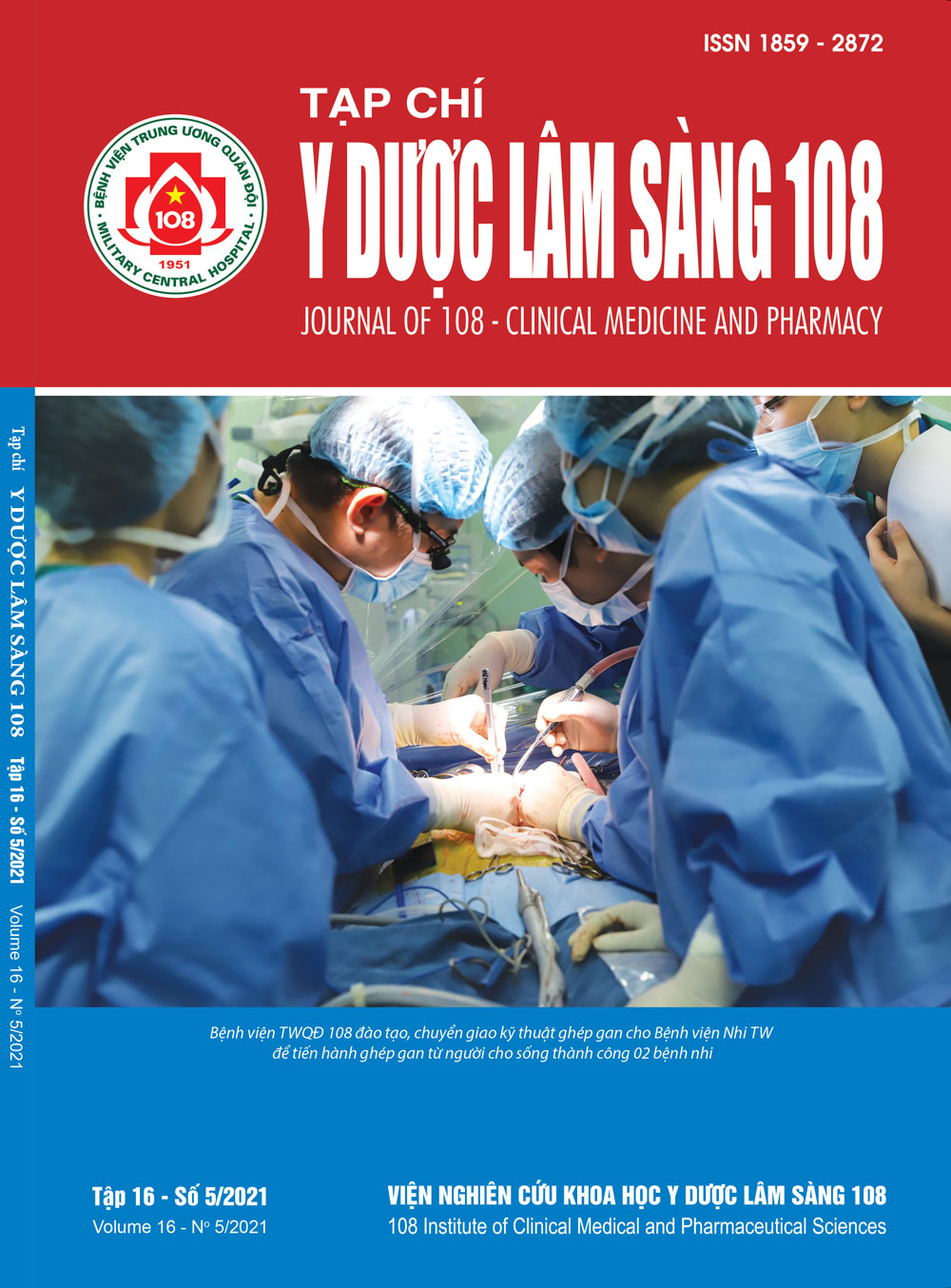Study on the relationship between electromyography index with clinical characteristics and magnetic resonance imaging in patients with lumbar disc herniation
Main Article Content
Keywords
Abstract
Objective: To evaluate the characteristics of changes in electromyography and its relationship with clinical characteristics and magnetic resonance imaging in patients with lumbar disc herniation. Subject and method: Including 60 patients with confirmed diagnosis of lumbar disc herniation, inpatient treatment at 103 Military Hospital from 9/2020 to 3/2021. Result: The age group 40 - 59 accounted for the highest rate of 48.3%; male/female ratio was 1.14/1. Location of disc herniation L4-L5 63.3%, L5-S1 30%, L4-L5 and L5-S1 6.7%, type of hernia right posterior deviation 41.6%, hernia posterior left deviation 55%; compound hole 3.4%. Electromyography on the patient side: The percentage of patients with electromyography abnormalities was 50%, of which: L5 root damage 30%, roots S1 13.3%; L5 and S1 roots 6.7%, 90% of patients had spontaneous potential; 100% of patients had reduced aggregation and motor units of neuropathy. The rate of electromyographic abnormalities was higher in patients: Disease over 6 months, severe and very severe pain according to VAS scale, stage 3 disc herniation, severe disc herniation, degree of root compression III and severe spinal hepatomegaly, the difference was statistically significant with p<0.05. Conclusion: There is a relationship between the percentage of patients with lumbar disc herniation with changes on electromyography with the clinical severity and the degree of injury on MRI of the lumbar spine.
Article Details
References
2. Nguyễn Hữu Công (1998) Chẩn đoán điện và bệnh lý thần kinh cơ. Nhà xuất bản Y học, Thành Phố Hồ Chí Minh, tr. 52-70.
3. Bryan ET, Kerry HL and Russ AB (2003) Comparison of surgical and electrodiagnostic findings in single root lumbosacral radiculopathies. Muscle & Nerve: Official Journal of the American Association of Electrodiagnostic Medicine 27(1): 60-64.
4. Christopher TP (2003) Electrodiagnostic challenges in the evaluation of lumbar spinal stenosis. Physical Medicine and Rehabilitation Clinics 14(1): 57-69.
5. Pfirrmann CW et al (2004) MR image–based grading of lumbar nerve root compromise due to disk herniation: Reliability study with surgical correlation. Radiology 230(2): 583-588.
6. David CP and Barbara ES (2012) Electromyography and neuromuscular disorders e-book: Clinical-electrophysiologic correlations (Expert Consult-Online). Elsevier Health Sciences.
7. Haibi Cai, Mitchell Kroll and Thiru Annaswamy (2021) Motor unit number index in evaluating patients with lumbar spinal stenosis. American Journal of Physical Medicine & Rehabilitation.
8. Mohamed AM et at (2012) Outcome and prognostic factors for recurrent lumbar disc herniation surgery. Egyptian Journal of Neurology, Psychiatry & Neurosurgery 49(2).
9. Raj MA, Nicholas SA and Brian JN (2017) Lumbar disc herniation. Current reviews in musculoskeletal medicine 10(4): 507-516.
10. Timothy RD, Thiru MA and Christopher TP (2020) Evaluation of persons with suspected lumbosacral and cervical radiculopathy: Electrodiagnostic assessment and implications for treatment and outcomes (Part I). Muscle & nerve 62(4): 462-473.
11. William Michael Bailey (2006) A practical guide to the application of AJNR guidelines for nomenclature and classification of lumbar disc pathology in Magnetic Resonance Imaging (MRI). Radiography 12(2): 175-182.
12. Zhi-Xiang Cheng et al (2021) Chinese Association for the Study of Pain: Expert consensus on diagnosis and treatment for lumbar disc herniation. World journal of clinical cases 9(9): 2058.
 ISSN: 1859 - 2872
ISSN: 1859 - 2872
